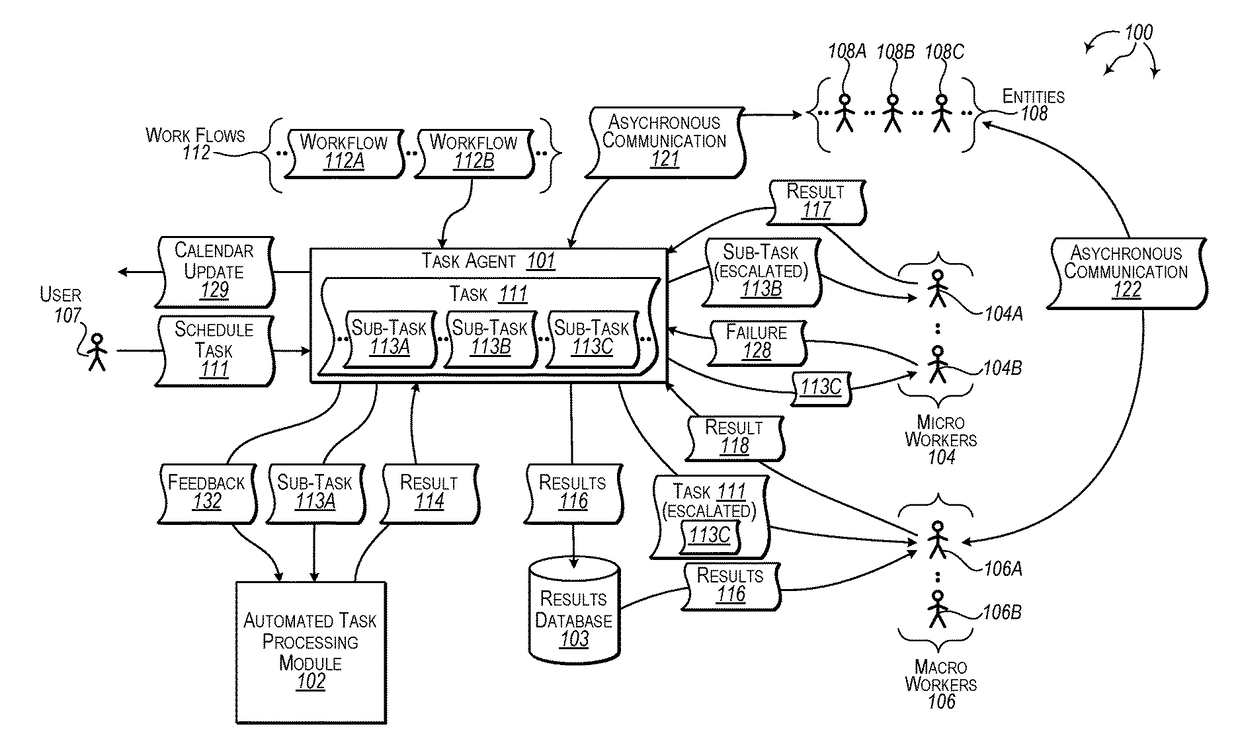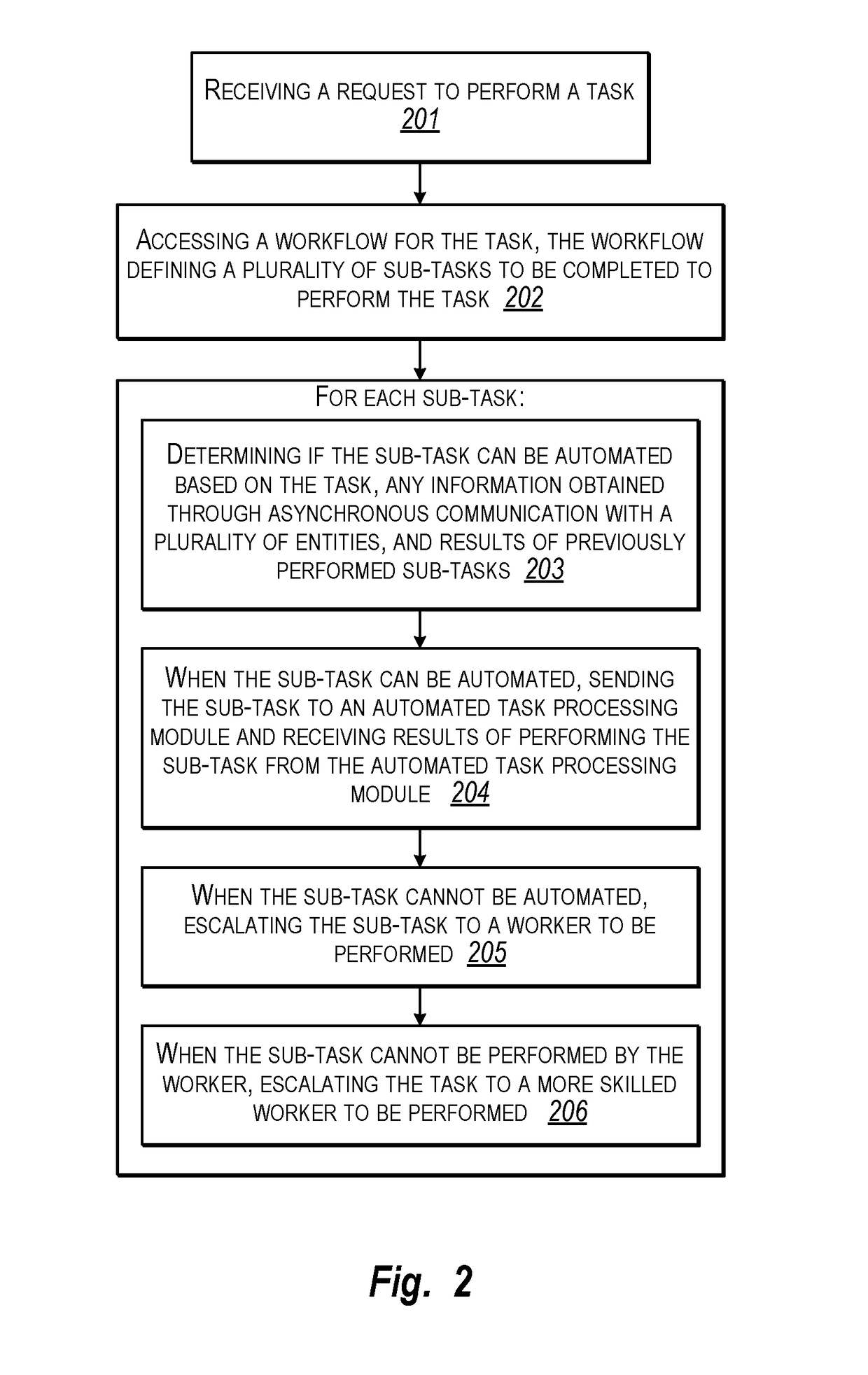Automated task processing with escalation
a task processing and task technology, applied in the field of automatic task processing with escalation, can solve the problems of scheduling meetings, scheduling and rescheduling, and rescheduling meetings is a relatively complex task
- Summary
- Abstract
- Description
- Claims
- Application Information
AI Technical Summary
Benefits of technology
Problems solved by technology
Method used
Image
Examples
Embodiment Construction
[0014]Examples extend to methods, systems, and computer program products for automated task processing with escalation. A request to perform a task (e.g., scheduling a meeting between multiple participants) is received. A workflow for the task is accessed. The workflow defines a plurality of sub-tasks to be completed to perform the task.
[0015]For each sub-task, it is determined if performance of the sub-task can be automated based on: the task, any information obtained through asynchronous communication with the one or more entities associated with the task, and results of previously performed sub-tasks. When the sub-task can be automated, the sub-task is sent to an automated task processing module and results of performing the sub-task from the task processing module is received. When the sub-task cannot be automated, the sub-task is escalated to a worker to be performed. When the sub-task cannot be performed by the worker, the task is escalated to a more skilled worker to be perfo...
PUM
 Login to View More
Login to View More Abstract
Description
Claims
Application Information
 Login to View More
Login to View More - R&D
- Intellectual Property
- Life Sciences
- Materials
- Tech Scout
- Unparalleled Data Quality
- Higher Quality Content
- 60% Fewer Hallucinations
Browse by: Latest US Patents, China's latest patents, Technical Efficacy Thesaurus, Application Domain, Technology Topic, Popular Technical Reports.
© 2025 PatSnap. All rights reserved.Legal|Privacy policy|Modern Slavery Act Transparency Statement|Sitemap|About US| Contact US: help@patsnap.com



